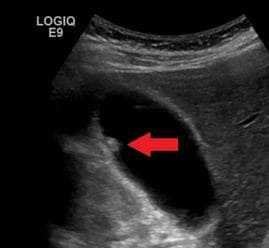A lump discovered in the armpit can be alarming, but does a lump always mean cancer? The answer isn’t always straightforward. Let’s explore a cancerous lump in the armpit, including signs, causes, risk factors, diagnosis, treatment and prognosis.
Overview
First Signs: Cancerous lumps in the armpit are often the first sign of breast cancer. They can also denote lymphatic cancer or signal the spread of other cancers.
Early Detection: Detecting these lumps early offers a better chance of treatment success. According to a study in the Journal of Clinical Oncology, early detection can improve five-year survival rate by 25%.
Causes: They are usually caused by cancer cells traveling to the lymph nodes from a primary tumour elsewhere.
Diagnosis: A doctor will typically use a physical exam, imaging tests, or a biopsy for diagnosis. Should treatment be required, options may include surgery, radiation therapy or chemotherapy.
Risk Factors: Understanding your risk factors can guide your screening strategy. Certain factors like age, family history, lifestyle habits and genetics can increase your risk.
Prognosis: The prognosis depends on various factors such as the stage of cancer and overall health condition of the person. Always consult an experienced medical professional for an accurate prognosis and treatment plan.
Signs and Symptoms
A cancerous lump in the armpit, also medically known as axillary lymph node, is typically indicative of a serious health condition that requires immediate medical attention.
Common signs and symptoms of a cancerous lump in the armpit:
- Appearance: A cancerous lump in the armpit is typically hard, immovable, and generally feels anchored to the surrounding tissue. Interestingly, they are mostly painless at first.
- Pain: However, with time, some people may begin to experience pain and discomfort in the area.
- Swelling: Swelling or inflammation around the armpit region can be another sign of a cancerous lump.
- Additional symptoms: Skin changes including redness, lesions or dimpling, weight loss, or fever may also be experienced. If you notice any of these symptoms reliably linked with a lump under your armpit, it’s essential to consult your doctor for a detailed medical examination immediately.
Understanding these symptoms could potentially aid in early detection and more effective treatment of the disease.
Causes and Risk Factors
Cancerous lumps in the armpit are typically a sign of an underlying health issue such as breast cancer, lymphoma, or leukemia. This happens because the armpit is rich in lymph nodes where cancer cells may accumulate. So, what are some causes and risk factors of these malignancies?
Potential risk factors include:
- Age and Gender: Older individuals, especially women, have a higher likelihood of developing breast cancer.
- Family History: Genetic predispositions significantly affect someone’s chances for these cancers.
- Hormonal Factors: Hormonal imbalances or exposures such as early menstruation, late menopause, or not having children can elevate the risk.
- Lifestyle Choices: Unhealthy habits like excessive alcohol consumption, smoking, or obesity also increase the risk.
Understanding these factors can aid in early detection and potentially improve your prognosis. If you notice an unusual lump in your armpit, consult your doctor immediately for a diagnosis. Treatment options will then be discussed based on the diagnosis results.
Treatment Options
Coping with the diagnosis of a cancerous lump in the armpit can be challenging, but there are several treatment options available. Let’s delve into some of them.
Different treatment options available for a cancerous lump in the armpit:
- Surgery: This entails removing the cancerous lump. Depending on the location, size, and stage of the cancer, a mastectomy or lumpectomy may be needed.
- Radiation Therapy: This method uses high-energy rays to destroy cancer cell. It could be employed as a standalone treatment or in conjunction with surgery or chemotherapy.
- Chemotherapy: Used usually when there’s a risk of cancer spreading to other parts, chemotherapy kills off cancer cells using medicines.
- Immunotherapy: This works by stimulating your immune system to fight off cancer cells.
Deciding on the best treatment depends on several factors including the patient’s health condition and the stage at which the cancer was detected.
Prognosis and Outlook
Upon discovering a cancerous lump in the armpit, one may wonder about the prognosis and the long-term outlook.
The prognosis depends heavily on many factors like:
- The stage at which the cancer was detected
- Speed of treatment initiation after detection
- The individual’s overall health
Broadly, earlier detection and prompt treatment often result in more positive outcomes. On the other hand, a late-stage diagnosis may make it more challenging, but not impossible, to treat effectively.
Treatment impact: Depending on these factors, one’s quality of life may be affected post-treatment. This may include pain management or rehabilitation from surgery.
Risk factors to note: Certain risk factors such as age, family history with cancer, or previous instances of cancer could influence one’s prognosis.
The prognosis for an individual with a cancerous lump in the armpit often varies greatly among different people, which underscores the importance of personalized health care strategies.
Prevention and Self-Care
Faithful adherence to preventative measures coupled with effective self-care plans can drastically reduce your risk of developing a cancerous lump in the armpit.
Here are some useful prevention and self-care tips:
Early Detection: Doing regular body checks for unusual growth in any part of your body allows for early detection. A cancerous lump starts small, hence detecting it early enough increases the chances of successful diagnosis and treatment.
Maintain Regular Medical Check-ups: Regular health screenings help identify potential risk factors and diagnose any complications early. Health professionals can spot signs of cancer, administer appropriate tests, and prescribe suitable treatments, thereby increasing survival chances.
Lifestyle Choices: Making healthy lifestyle choices like balanced dieting, regular exercise, moderate alcohol consumption, and refraining from tobacco use helps reduce cancer risks.
Conclusion
A cancerous lump in the armpit could be owing to various causes such as lymphoma or breast cancer. Recognizing the signs early, understanding risk factors, and seeking immediate medical attention for diagnosis is vital. Treatment options depend on the type of cancer and its stage, sometimes ranging from chemotherapy and radiation therapy to surgery. Prognosis varies significantly, determined largely by early detection and prompt treatment.
With this knowledge, stay vigilant to maintain your health. A cancer diagnosis doesn’t spell an end, but calls for courage, strength and faith. You can fight it and emerge even stronger on the other side.
About the Author
Reyus Mammadli is the author of this health blog since 2008. With a background in medical and biotechnical devices, he has over 15 years of experience working with medical literature and expert guidelines from WHO, CDC, Mayo Clinic, and others. His goal is to present clear, accurate health information for everyday readers — not as a substitute for medical advice.







